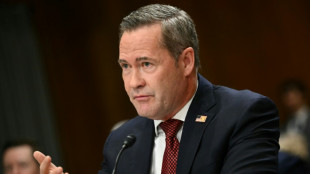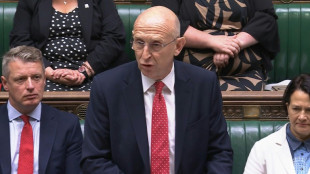

US consumer inflation accelerates as tariff scrutiny grows
US consumer inflation picked up in line with analyst expectations last month, government data showed Tuesday, as policymakers try to gauge how President Donald Trump's ever-growing list of tariffs is affecting the economy.
Observers are expecting to learn more about the effects of Trump's duties over the summer months, meaning June's data marks the start in a series of closely-watched figures -- particularly as officials mull changes to interest rates as well.
The consumer price index (CPI) was up 2.7 percent from a year ago in June, rising from the 2.4 percent figure in May as energy costs rose, said the Department of Labor.
Other areas that saw cost increases included household furnishings and apparel, both segments that experts are eyeing for signs of cost hikes after Trump's sweeping tariffs this year.
While Trump imposed a 10 percent tariff on almost all trading partners in April and separately slapped steeper duties on imports of steel, aluminum and autos, US officials have pushed back against warnings that these could spark price increases.
Economists caution that tariff hikes could fuel inflation and weigh on economic growth, but US Treasury Secretary Scott Bessent has labeled such expectations "tariff derangement syndrome."
CPI rose 0.3 percent in June from the previous month, an uptick from the 0.1 percent increase in May as well.
Excluding the volatile food and energy segments, CPI climbed 0.2 percent on-month, picking up from May too.
Compared with a year ago, "core" CPI was up 2.9 percent in June.
Even if headline inflation figures show no "meaningful" surge because of tariffs alone, Nationwide economist Oren Klachkin warned it may be too soon to see their full impact just yet.
Businesses have been trying to hold off consumer price hikes through a range of actions, from eating into their own margins to trying to share costs with their suppliers, he said.
But it remains to be seen how long they can do this.
There could be a bigger impact over the summer, Klachkin added.
For now, he is looking "under the surface" at components most exposed to Trump's tariffs, such as furnishings, recreational goods and cellphones, to discern their effects.
Besides steep tariffs that have already taken effect, Trump has also threatened even higher levels on dozens of key trading partners including the European Union, India, Japan and South Korea if they do not strike deals to avert these elevated levels.
He has also opened doors to further levies on sector-specific imports ranging from semiconductors to pharmaceuticals, injecting more uncertainty in the global economy and worries of supply chain snags.
O.Kouris--AN-GR



